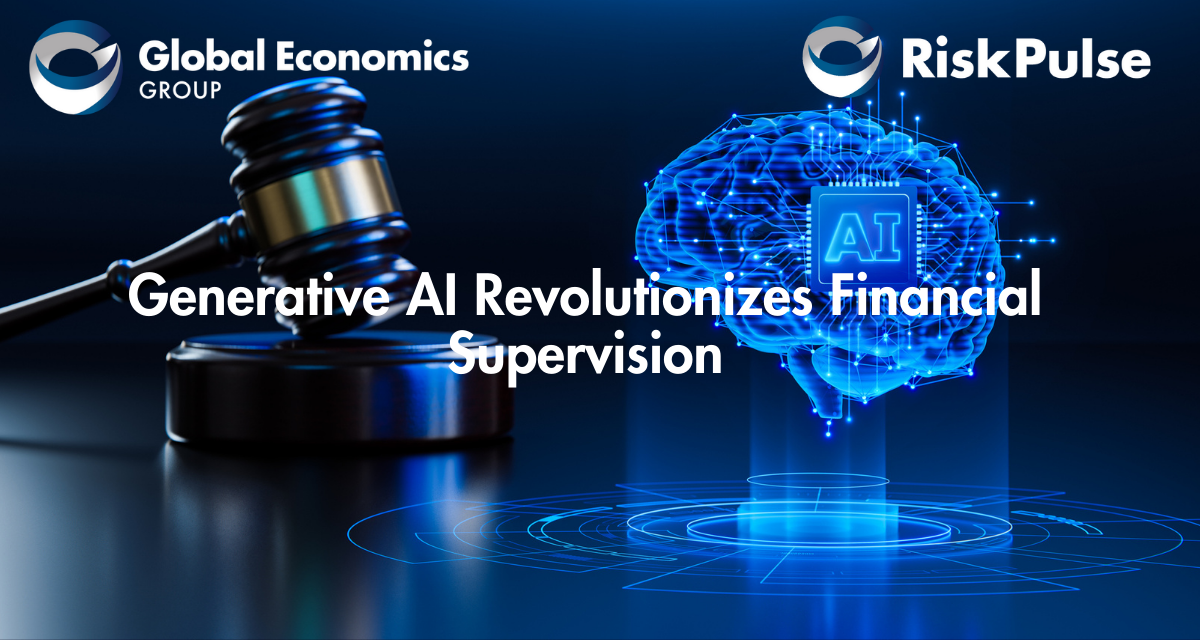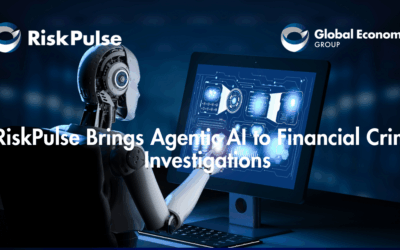The fight against financial crime is at a pivotal point in the European Union, driven by sweeping regulatory changes and the potential of new technology. The recent EBA Report on the use of AML/CFT Supervisor Technology tools (August 2025) highlights both the progress made and the challenges still to overcome in moving toward data-driven, technologically advanced oversight. In this context, generative AI presents a transformative opportunity if financial crime supervisors can strategically address the barriers that block innovation.
The Status Quo: Supervisor Technology Adoption and Its Early Impact
Next-generation supervisory technology, or next-gen SupTech, represents a transformative shift in how financial oversight is conducted, utilizing AI, machine learning, cloud platforms, and seamless data integration to go beyond manual, siloed systems. These advanced solutions automate data analysis, enable real-time risk detection, and foster collaboration among regulatory agencies and financial institutions. Key features include scalable architectures, unified data lakes, user-friendly interfaces, smart automation, and intelligent reporting, all of which empower supervisors to operate in a proactive, agile, and data-driven manner that quickly adapts to evolving financial threats and regulatory requirements.
In June 2024, the EU adopted a comprehensive AML/CFT legislative package, inaugurating the Anti-Money Laundering Authority (AMLA) and laying the foundations for harmonized, technology-assisted supervision across Member States. The ensuing months saw a flurry of activity: 31 competent authorities from 25 EU Member States (plus three third countries) surveyed their Supervisor Technology deployments, totaling nearly 60 tools and projects across varied supervisory tasks.
The findings reveal a landscape in transition:
- 47% of next-generation Supervisor Technology solutions are already in production, 38% in development, and 15% in exploration.
- Primary use cases center around risk assessments, big data management, process automation, data visualization, and crypto-asset supervision.
These strides have improved data quality, enhanced analytics and decision-making, automated repetitive supervisory functions, and enabled more timely risk detection. Yet, the report underscores that Supervisor Technology remains in its infancy within EU financial crime supervision, most authorities feel only moderately prepared for radical technological change, and structural and cultural barriers frequently stymie innovation.
Blockages to Innovation: Why Financial Crime Supervision Struggles with Tech Adoption
The report is candid about the multifaceted obstacles limiting Supervisor Technology innovation, many of which are especially salient as supervisors contemplate adopting generative AI and other cutting-edge tools.
- Data Quality and Governance
Fragmented, legacy data systems hamper the effectiveness of machine-driven analysis. SupTech tools, particularly generative AI solutions, rely on high-quality, standardized, and interoperable data to deliver meaningful insights. Poor data governance risks inefficiencies, duplication, and unreliable outcomes—a critical challenge for safety-sensitive applications like AML/CFT supervision.
- Resource Constraints
Both human and technical resources are stretched to the limit. Deploying, running, and maintaining AI-powered Supervisor Technology requires robust budgets, modern IT infrastructure, and a workforce skilled in data science and financial crime analytics. The shortage of domain-specific AI talent is acute; this is compounded by a lack of investment in personnel capable of translating supervisory needs into technological specifications.
- Legal Complexity
Supervisor Technology, and generative AI in particular, raises thorny questions around GDPR compliance, decision-making liability, and data protection. No regulator wants to be the first to make a mistake in algorithmic supervision, especially given the delicacy of using AI for decisions that affect institutions’ reputations and livelihoods. Unclear regulations and risk-averse legal cultures impede innovation and slow down practical experimentation with advanced AI.
- Operational and Technical Risks
System failures, “black box” algorithms, and the difficulty of auditing or explaining machine-driven decisions are especially problematic for generative AI. Regulators must justifiably explain their decisions, safeguard against unpredictability, and ensure that automated processes do not compromise human oversight or transparency—a challenge magnified by the complexity and opacity of modern AI models.
- Institutional Resistance and Low Digital Literacy
Cultural inertia slows change. Many supervisors remain skeptical of AI-driven insights, worried about job displacement, reliability, and the risk of over-automation. Digital literacy among supervisors and staff frequently lags behind what is needed to confidently adopt and adapt new technologies.
- Limited Collaboration and Duplicative Efforts
Despite the EU’s push for harmonization, many authorities work in isolation, developing fragmented and sometimes incompatible solutions. This siloed approach inhibits sharing best practices and scaling effective tools across jurisdictions, leading to duplicated investments and lost opportunities for coordinated innovation.
Generative AI: A Transformative Tool with Unique Promise
Generative AI—exemplified by large language models (LLMs), foundation models, and multimodal AI—is not just another digital tool. These systems can:
- Analyze enormous datasets across sources, languages, and formats rapidly and at scale
- Generate synthetic data for training and privacy-preserving analysis
- Power natural language Q&A, document translation, and automated reporting
- Assist with semantic search, anomaly detection, and scenario testing
- Model complex, evolving financial crime strategies with adaptive AI agents
When paired with robust governance, these capabilities can help supervisors:
- Spot emerging patterns and typologies in illicit finance
- Automate labor-intensive reviews, reporting, and case prioritization
- Improve the consistency and accuracy of risk assessments
- Facilitate pan-EU and cross-border collaboration with real-time, multilingual analytics
Real-World Applications in AML/CFT Supervision
- Synthetic Data Generation: Generative AI can produce synthetic financial transaction data, preserving privacy and enabling tool testing in controlled environments. This addresses supervisors’ need for realistic datasets without violating confidentiality.
- Automated Document Review and Translation: Financial crime investigations often span jurisdictions and languages. AI-powered NLP tools can ingest, translate, and summarize key documents, reducing manual workload and speeding up critical investigations.
- Intelligent Risk Assessment: AI models can analyze years of transaction data, compliance reports, and regulatory filings, flagging new risks and adjusting supervisory priorities based on dynamic, data-driven insights.
- Explainable AI Reports: Generative models can create human-readable rationales for flagged transactions, suspicious behavior, or unusual patterns—bolstering transparency, accountability, and auditability.
- Collaboration Platforms: Multi-agent AI systems can facilitate secure, privacy-aware collaboration across authorities—synthesizing findings, harmonizing standards, and helping tailor supervisory actions to local or EU-wide priorities.
Overcoming Obstacles: Strategies for Unlocking Generative AI’s Potential
The EBA report articulates several good practices that are doubly important for success with generative AI:
- Change Management and Digital Culture
Supervisory authorities should foster a digital-first culture, sponsoring continuous training in data science, AI ethics, and hands-on tool adoption. Leadership must embrace structured change management that sets clear goals, phases implementation, and manages resistance proactively. Peer learning and incentives for experimentation can encourage buy-in across technical, operational, and legal teams.
- Robust Data Governance and Standardization
Before generative AI can thrive, authorities must:
- Build interoperable data platforms
- Conduct regular audits and validation
- Develop EU-wide standards and protocols for data sharing, annotation, and use
Synthetic data can enable innovation while protecting privacy, but its generation and use must be regulated and transparent.
- Legal and Regulatory Clarity
Close cooperation with data protection authorities is essential. Joint guidance should:
- Clarify expectations under GDPR, especially for data minimization, purpose limitation, and automated decision-making
- Define liability and human oversight requirements for AI-driven supervisory actions
- Establish frameworks for algorithmic transparency and explainability
- Performance Metrics and Continuous Evaluation
Generative AI tools must be evaluated against supervisory objectives using clear, concrete metrics. Pilot phases, user feedback, and iterative development will ensure that tools deliver measurable gains in efficiency, accuracy, and effectiveness. Authorities should prioritize needs-driven deployments—targeting real pain points rather than adopting AI for novelty’s sake.
- Cross-Border Collaboration and Co-Development
Pooling resources will accelerate innovation and reduce costs. AMLA can play a central role in driving pan-EU initiatives—facilitating the co-development of shared tools and coordinating joint projects. Secure, privacy-preserving collaboration platforms, harmonized standards, and joint procurement will help overcome institutional silos and scale best practices across Member States.
- Institutional Data Sharing
Sharing data across financial institutions creates a powerful network effect that benefits both regulators and the institutions themselves, significantly improving the detection and prevention of financial crime. By pooling intelligence—such as transaction patterns, suspicious activity reports, and risk indicators—institutions can identify complex and hidden financial crime networks that often span multiple organizations. This collaboration allows regulators to detect new fraud types and emerging threats earlier, while institutions gain deeper insights into criminal behaviors that might be invisible within their individual data silos. The result is faster fraud detection, better case prioritization, and more effective intervention, helping prevent criminals from exploiting gaps between isolated systems. At the same time, shared data supports stronger law enforcement efforts, enables real-time customer protection, and reduces compliance duplication, contributing to a more secure and resilient financial ecosystem for all stakeholders.
The Road Ahead: Toward EU Leadership in Data-Driven Financial Crime Supervision
The EU is ready to lead globally in financial crime oversight—an effort that requires proactive and daring adoption of generative AI and related technologies. The EBA report indicates that the foundation is being laid: partnerships for collaboration, strategies for implementation, and an understanding of both the opportunities and risks of innovation.
To realize generative AI’s full potential, financial crime supervisors must adopt a new mindset. They need to view technology as a strategic partner, not a distant threat, and invest in the right infrastructure, skills, and policies to ensure responsible and effective use. The benefits—more accurate risk detection, increased transparency, and faster, more efficient investigations—are within reach.
Key Takeaways
- Generative AI can revolutionize AML/CFT supervision, but only if data, skills, legal structures, and cultures evolve to support its responsible use.
- The obstacles are significant, but not insurmountable: focused change management, robust data governance, legal clarity, continuous evaluation, and active collaboration are crucial to success.
- EU supervisors should prioritize generative AI applications that directly solve concrete supervisory problems, avoiding hype-driven deployments and focusing on outcomes.
- AMLA’s role as a coordinator and catalyst is more important than ever—pooling expertise, driving joint innovation, and ensuring that EU standards remain ahead of global challenges.
As the next wave of financial crime tactics emerges, only supervisors empowered with the latest generative AI will be agile enough to respond, adapt, and protect the integrity of Europe’s financial system. The journey will require courage, investment, and constant learning—but the future of financial crime supervision depends on it.






